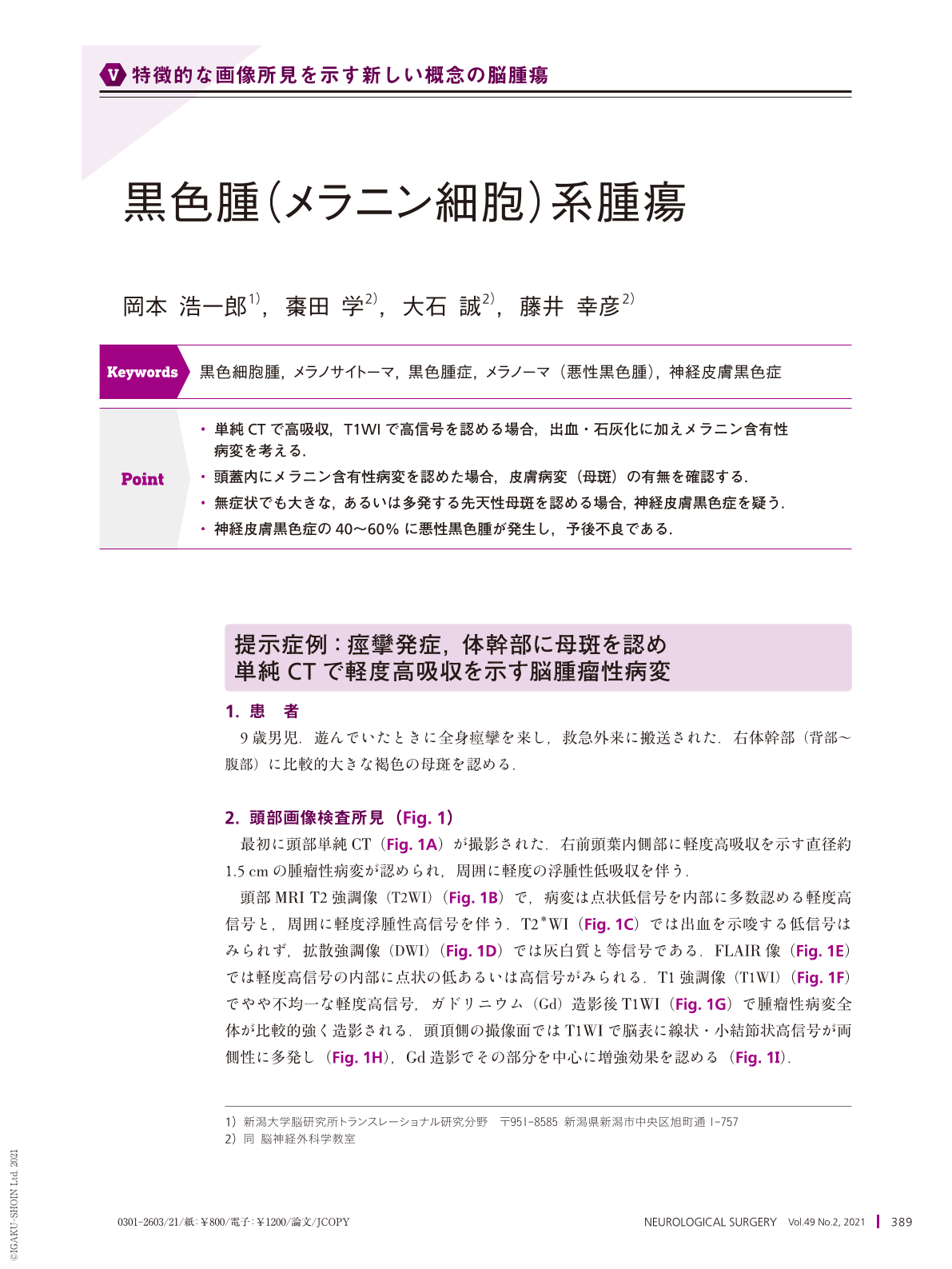Japanese
English
- 有料閲覧
- Abstract 文献概要
- 1ページ目 Look Inside
- 参考文献 Reference
Point
・単純CTで高吸収,T1WIで高信号を認める場合,出血・石灰化に加えメラニン含有性病変を考える.
・頭蓋内にメラニン含有性病変を認めた場合,皮膚病変(母斑)の有無を確認する.
・無症状でも大きな,あるいは多発する先天性母斑を認める場合,神経皮膚黒色症を疑う.
・神経皮膚黒色症の40〜60%に悪性黒色腫が発生し,予後不良である.
Primary melanocytic neoplasms of the central nervous system(CNS)presumably arise from leptomeningeal melanocytes that are derived from the neural crest. Melanocytic neoplasms associated with neurocutaneous melanosis likely derive from melanocyte precursor cells that reach the CNS after somatic mutations, mostly, of the NRAS. They should be distinguished from other melanotic tumors involving the CNS, including metastatic melanoma and other primary tumors that undergo melanization, such as melanocytic schwannomas, medulloblastomas, paragangliomas, and various gliomas, because these lesions require different patient workups and therapy. Primary melanocytic neoplasms of the CNS that are diffuse and do not form macroscopic masses are called melanocytoses, whereas malignant diffuse or multifocal lesions are collectively called melanomatoses. Benign and intermediate-grade tumoral lesions are called melanocytomas. Discrete malignant tumors are called melanomas. CT and MRI of melanocytosis and melanomatosis show diffuse thickening and enhancement of the leptomeninges, often with focal or multifocal nodularity. Depending on the melanin content, diffuse and circumscribed melanocytic tumors of the CNS may show some characteristics on CT and MRI: iso- to hyperattenuation on CT and paramagnetic properties of melanin on MRI resulting in an isointense signal on T1WIs and iso- to hypointensity on T2WIs.

Copyright © 2021, Igaku-Shoin Ltd. All rights reserved.


